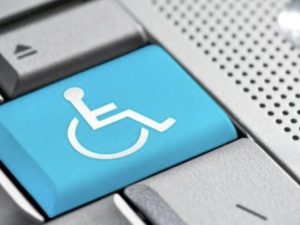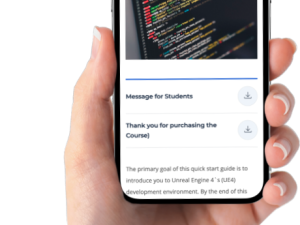Information and Data Literacy
- Description
- Curriculum
Introduction
In the so-called Fourth Industrial Revolution and with the appearance of technologies such as 5G, Internet of Things (IoT), Artificial Intelligence, technologies are reaching a point of maturity and democratization that are transforming our culture and our society. We could speak of “democratization” understood as the generalized and low-cost access of the general population to technology, but technological democratization does not include all people; It is leaving behind several groups, such as people with disabilities, the elderly, people with low economic resources, etc.
As stated in the conclusions of the Technology and Disability Report (10th Edition), of the Adecco Foundation (2021):
– 70% of people with disabilities say that New Technologies have improved their overall quality of life, facilitating their training, access to employment, leisure or communication. – 72% of people with disabilities who are employed explain that New Technologies help them to carry out their job. Of these, 18% use technological support products adapted to their disability (for example, ergonomic mice) and 9% comment that they have achieved their current job thanks to the consolidation of teleworking in the context of the pandemic. On the other hand, 6 out of 10 use conventional technologies in their workplace.- Almost half of those surveyed (48%) declare that they find barriers in the access, use and management of New Technologies. Specifically, 45% commented that their use seems “very complex and advanced”, followed by 29% who found accessibility problems, being unable to use certain devices due to a lack of adaptations for their disability. For their part, 24% affirm that they lack economic resources to buy and acquire new technologies and 16% do not trust digital, with “fear” of being deceived and/or victim of some fraud.- If people with disabilities could put technology at the service of their full inclusion, they would improve existing technological adaptations (36%), they would impose Universal Accessibility as a norm in all new technological products (29%), they would generalize cognitive accessibility in information technologies (20% ) and would apply technological resources to the eradication of prejudices (15%).
Therefore, the lack of accessibility appears as one of the difficulties for which people with disabilities see their democratic rights violated.
In this learning module we intend to offer certain hints of theoretical and practical information on web and Office accessibility, which can favor their social and educational inclusion and, therefore, guarantee their Rights.
The Learning Objectives covered by the Module
| In completing this Module, the learner will be able to:
· Know the main web accessibility tools. · Use Office tools to create and access accessible content. ● Know some examples of resources for the preparation of accessible educational materials, based on the reference guide. |
Units within the Module :
| Module #1 is divided in 3 main units:
● 1.1 Accessibility in Office documents ● 1.2 Accessible websites ● 1.3 Brief resource guide for the development of accessible educational materials |
-
1Accesibility in Office
Unit 1 aims to show the main accessibility features of Microsoft Office.
By the end of the unit, you will have learned:
-To create accessible documents in Word, Power Point and Excel.
-To incorporate accessibility to Outlook.
-To incorporate the latest updates in Microsoft Office accessibility
-To review the accessibility of the generated documents and solve problems.
The contents of the unit are presented below:-Accessibility in Word.
-Accessibility in Power Point.
-Accessibility in Excel.
-How to write alternative texts, or make images accessible.
-Other tools that will be useful to know: Accessibility in Outlook, Accessible Templates, How to run the Microsoft Accessibility Checker.
-
2Assessment 1, Activity Unit #1
-
3Web accessibility
Upon completion of this unit, the student will be able to:
· Know the characteristics of web accessibility, its importance and W3C standards.
· Accessible web content
· User tools for web accessibility
· How to verify the accessibility of a web page
· How to proceed to claim accessibility on a website
We will cover these topics:
Concepts: what is web accessibility, why is it important? The importance of the W3C standard
accessible content
User accessibility tools.
Tools to verify web accessibility
Examples of non-accessible and accessible websites
Contacting organizations about inaccessible websites.
-
4Assessment 1, Activity Unit#2
-
5Brief repository of online tools for the development of accessible materials
In this Unit the following contents will be covered:
- Basic indications for the elaboration of contents following the Universal Design for all people.
- European standards for easy reading and understanding
Translation of speech to text and text to speech through online resources, also in Ppt.
-
6Assessment 1, Activity Unit #3













